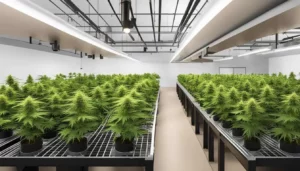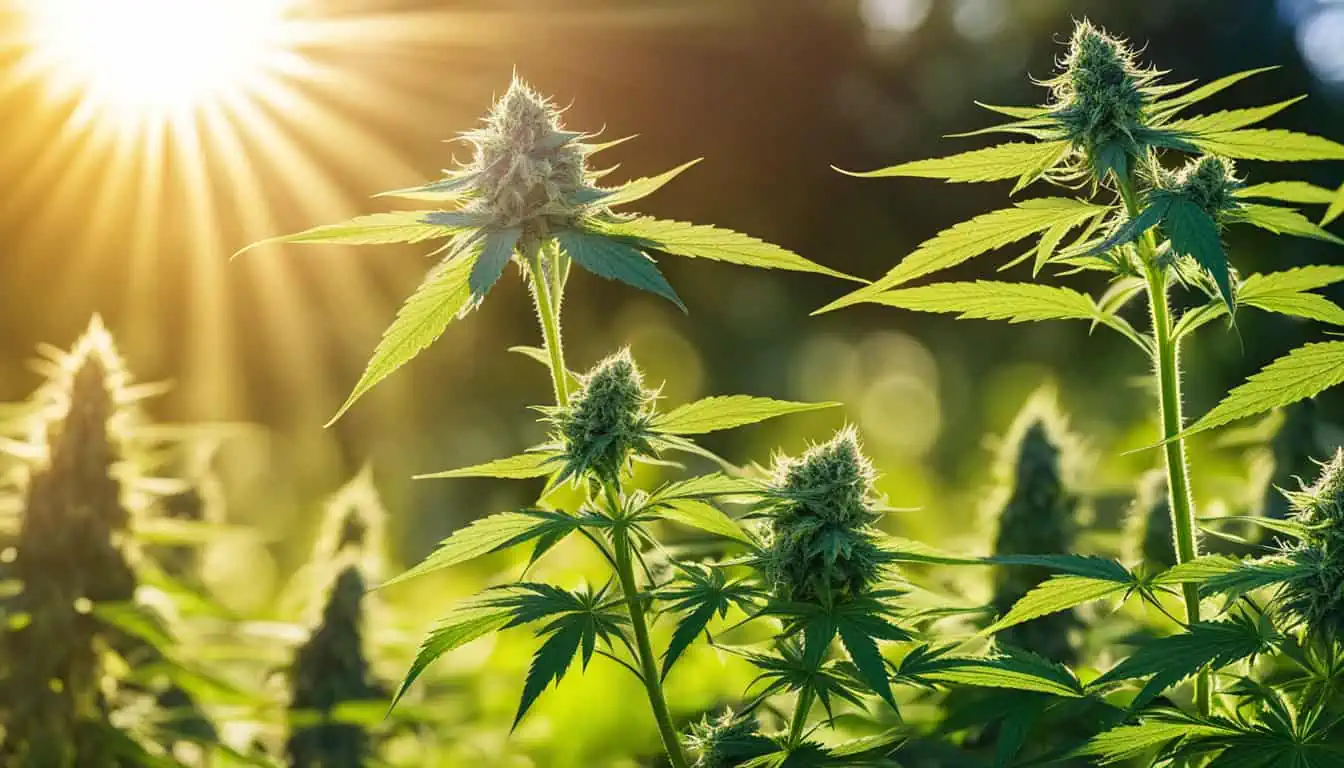Growing tall weed plants can lead to higher yields and more bud production. While genetics play a role, proper cultivation techniques are key to maximizing cannabis height and yields. Here are 10 expert tips to grow tall cannabis plants indoors and outdoors.
Why Grow Tall Weed Plants?
Taller cannabis plants have more space for bud production along their top and branches. More buds can lead to higher yields come harvest time. However, there are some key advantages and disadvantages to growing tall weed plants:
Pros of Tall Weed Plants
- More flowering sites for bud development
- Ability to train plants through techniques like SCROG
- Taking advantage of vertical grow space
- Allows light to better penetrate the canopy
Cons of Tall Weed Plants
- Requires more nutrients and water
- Needs proper support and training
- Can be difficult to grow indoors
- Increased susceptibility to mold, mildew, and pests
While tall plants can produce abundant yields, quality cultivation practices are needed to realize their full potential.

Tip #1: Pick the Right Genetics
Choosing the right strain is the first step to growing tall cannabis plants. While cultivation techniques are important, genetics play a key role in determining marijuana height.
To Grow Tall Weed Plants you should Target These Types of Strains
- Sativas: Known for their tall, slender growth structure
- Sativa-dominant hybrids: Retain more sativa-like growth patterns
- Landrace strains: Unmodified genetics that grow taller
- Pure indicas: Some can grow tall in the right conditions
Avoid These Strains
- Indica-dominant hybrids: Shorter and bushier growth structure
- Ruderalis hybrids: Auto-flowering strains stay short
- Dwarfed cannabis strains: Bred to be extra compact and small
When sourcing seeds or clones, look for landrace sativas like Durban Poison, African sativas, and classic tall hybrids like Sour Diesel and Jack Herer. This can set your plants up for optimizing height.
Tip #2: Germinate Seeds Properly
Successfully germinating cannabis seeds establishes a healthy start. Follow these steps for the best germination rates:
- Select viable, mature seeds that are firm and dark colored
- Use the paper towel method by dampening paper towels and adding seeds
- Maintain proper moisture and warmth around 75°F for fast sprouting
- Plant sprouted seeds carefully once the root tap emerges
Avoid germinating in wet mediums like soil, which can encourage mold or damping off. Handle sprouts with care to avoid damaging the delicate root. Healthy seedlings are ready for transplanting into your growing medium.
Tip #3: Transplant into Final Containers
Transplanting into large final containers allows more root space for growth. Follow these tips when transplanting sprouted plants:
- Use containers 5 gallons or larger for maximum growth
- Gradually step up container sizes for less transplant shock
- Amend soil mix with compost or nutrient amendments
- Bury stem deeper to support increased size and weight
Transplant before vegetation growth explodes to encourage taller stretching. Materials like fabric pots, smart pots, and grow bags allow air pruning for healthier roots.
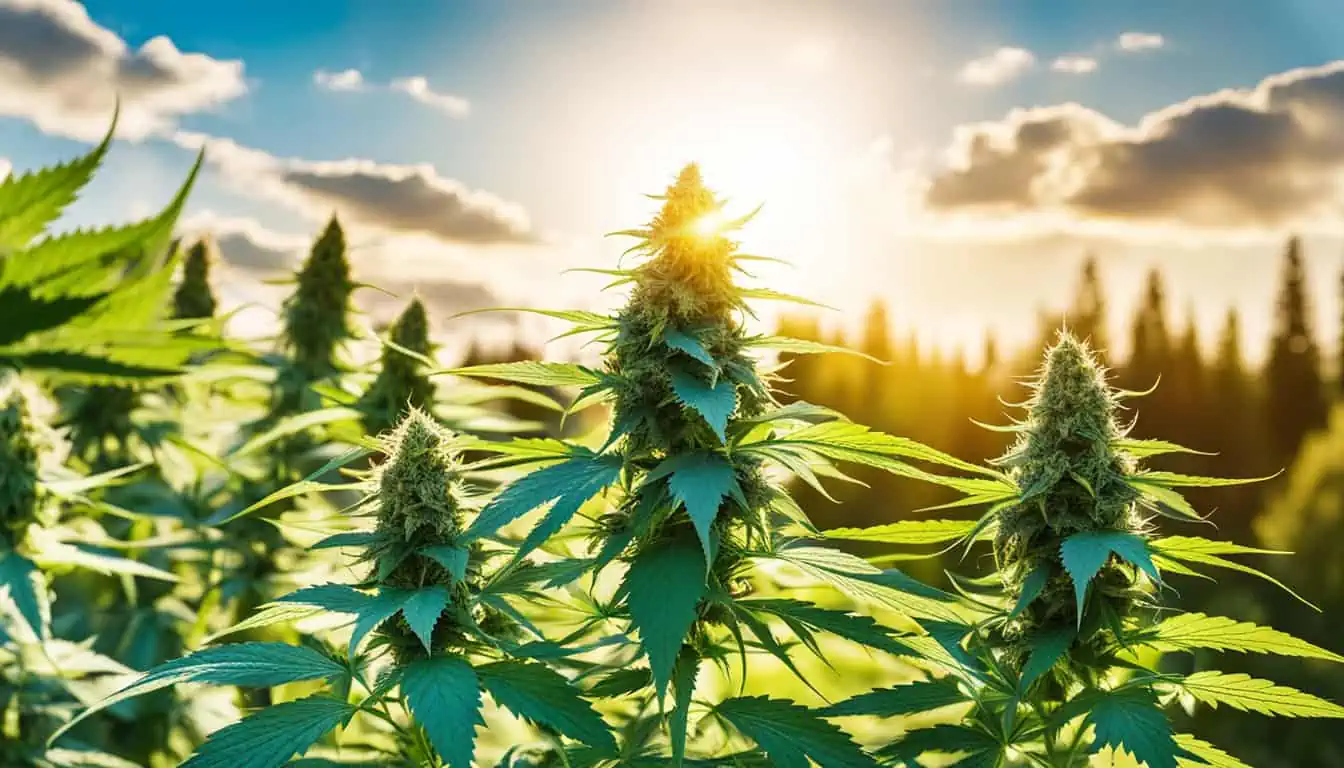
Tip #4: Train Young Vegetative Plants
Training techniques like topping and low-stress training in the vegetative stage prepare plants for later vertical growth.
- Top above nodes 4-6 to split colas for more flowering sites
- Use LST techniques like bending stems and tying branches
- Space nodes evenly for an even canopy across the grow space
- Allow 1-2 weeks of recovery before switching to flowering
Training directs growth hormones to upper branches that will support heavier flowering. This early training sets the foundation for taller stretching when buds start forming.
Tip #5: Maximize Light Exposure
Increasing light exposure optimizes photosynthesis for faster growth. Follow these lighting best practices:
- Hang grow lights 12-18 inches above the canopy
- Keep lights on 18-24 hours daily in the vegetative stage
- Increase wattage gradually as plants grow and fill space
- Add UV supplemental lighting for trichome production
- Use reflectors and hang vertically to better penetrate the canopy
Outdoors, choose the sunniest spots sheltered from wind. Supplement natural sunlight with grow lights to maximize light exposure for taller plants.
Tip #6: Give Roots Room to Grow
Healthy, vibrant root zones support vertical stretching above the soil. Use these techniques to expand root systems:
- Start in 1-2 gallon pots and gradually increase the size
- Transplant into 5-7 gallon containers for large plants
- Use fabric smart pots to encourage air pruning of roots
- Bury stems deeper to stabilize tall top-heavy plants
- Allow lots of space between pots to accommodate growth
Ample root runoff is needed to uptake nutrients and water. Keep roots cool around 70°F and use beneficial mycorrhizae for branching.
Tip #7: Use High Nitrogen Fertilizer
Boosting nitrogen increases vegetative leaf and stem growth for taller stretching.
- Find fertilizers with NPK ratios like 3-1-2 favoring higher nitrogen
- Use 20-30% nitrogen products in early vegetative stage
- Increase to 30-50% nitrogen in late vegetation for explosive growth
- Lower nitrogen (20-30%) after switching to flowering stage
- Avoid nitrogen toxicity by not exceeding 50% concentration
Organic sources like blood, fish, and bat guano contain higher nitrogen levels. Cut nitrogen once flowering begins to encourage bud production over leaf growth.
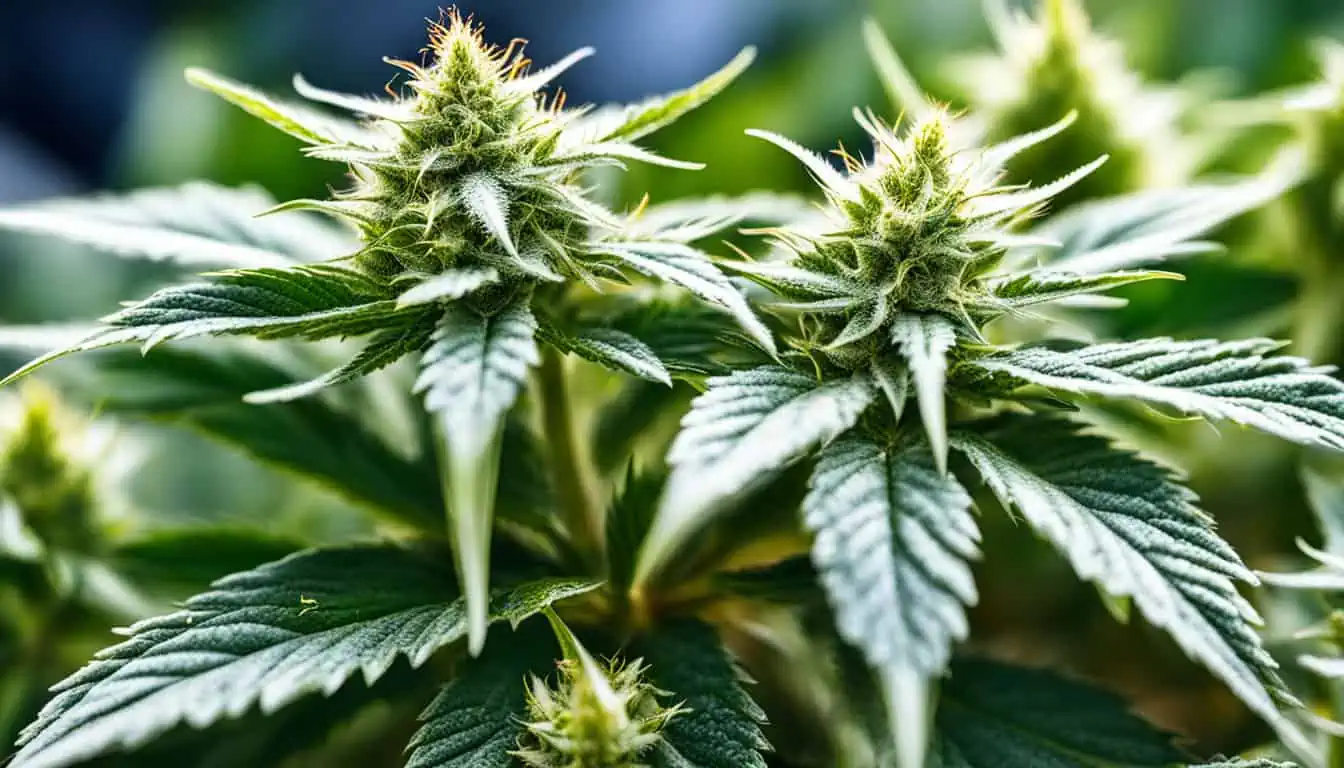
Tip #8: Support Stalks and Branches
Providing physical support prevents top-heavy colas from collapsing plant structures.
- Use 7-8 foot stakes inserted deeply into the soil for support
- Tie flexible plant ties around the main stalks and branches
- Weave branches through the trellis for horizontal support
- Use nets to support heavy colas by creating a hammock
- Construct scaffolding using bamboo rods or PVC pipe
Outdoors, and shelters like greenhouses prevent wind damage. Check ties and staking regularly as plants grow taller and heavier.
Tip #9: Control Environmental Factors
Optimizing the indoor or outdoor environment promotes growth rather than slowing stretching.
- Increase indoor temps to 80°F to boost vegetative growth
- Control indoor humidity around 65-70% RH
- Provide good air circulation to strengthen plant tissues
- Water when the top 2 inches of soil is dry to prevent drooping
- Give plants a dark period for 8-10 hours nightly
Outdoors, find sunny spots sheltered from wind. Watch for signs of environmental stress and pests that can limit upward growth.
Tip #10: Practice Advanced Training Techniques
Low-stress training early on lays the groundwork for taller plants. But as flowering progresses, plants need more advanced training and pruning to support heavy buds and direct growth.
- Employ Scrog (screen of green) by weaving branches through netting
- Try the mainline technique (manifold) to even out four or eight main colas
- Remove lower foliage and buds to redirect energy to the top
- Use wider plant ties to provide extra structural support
- Stake and tie heavily flowering branches to prevent snapping
- Monitor for light burn on upper buds and leaves as plants grow closer to the light source
- Keep an eye on pest damage that can weaken stems and branches
Properly supporting tall flowering plants prevents collapsed branches and maintains optimized bud production. Pruning and advanced training maximize yield potential on vertically stretched plants.
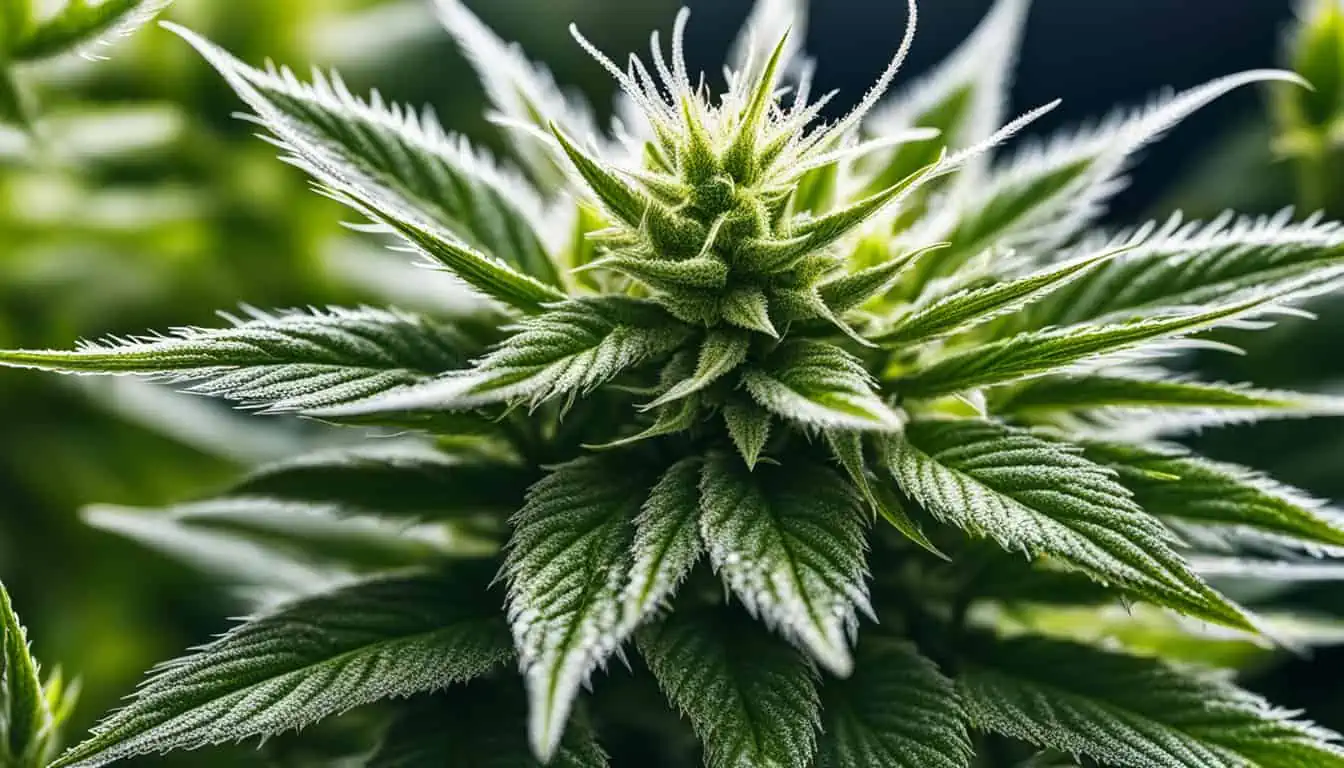
Let Plants Reach Their Full Potential
With the right genetics, targeted training, optimal light and nutrients, proper support, and ideal growing conditions, cannabis plants can reach impressive heights with abundant yields.
Pay close attention as flowering stretches get underway. Tall lanky plants are prone to bud rot and must be closely monitored. Increase air circulation while maintaining optimum temperature and humidity levels.
Growing tall may not work in confined indoor spaces. Outdoor plants have the advantage of unlimited vertical room to work with. Carefully manage tall plants to avoid attention and potential theft.
Maximize yields from tall plants through proper drying, curing, trimming, and storage after harvest. Avoid letting thick colas bunch together, which slows the drying process and can lead to mold issues.
Growing towering marijuana plants can reward dedicated cultivators with huge yields. Follow these tips to realize the sky-high potential of tall cannabis!
Conclusion
Growing tall, high-yielding weed plants indoors or outdoors is an exciting endeavor for many cannabis cultivators. While genetics determine marijuana’s natural height potential, the proper cultivation environment and techniques are required to maximize plant height and bud production.
The 10 expert tips covered for growing tall weed plants, including choosing the right strains, properly germinating seeds, early training, optimal lighting, ample root space, targeted nutrients, physical support, and controlled growing conditions, can all help marijuana plants reach their full vertical potential. When combined with enough time in the vegetative stage, plants stretch extensively once flowering begins.
However, tall lanky plants require extra attention to prevent issues like mold, pests, and collapse. Avoid unwanted attention from overly large outdoor plants. With patience and diligent care, towering cannabis plants can reward growers with a bountiful, resinous harvest.
FAQ
What causes cannabis plants to grow tall?
The main factors that cause marijuana plants to grow tall include their genetics, optimal light exposure, adequate root space, high levels of nitrogen fertilizer, proper training techniques, and ideal environmental conditions. Sativa genetics contribute to tall vertical growth.
Are tall weed plants better for higher yields?
In general, taller cannabis plants have the potential for higher yields because their stature allows more sites along branches for flower bud production. However, plants that grow too tall and lanky can actually suffer from lower-quality buds and issues like mold. Moderately tall, robust plants optimized through training allow big yields.
How tall do sativa plants get?
On average, pure sativa strains grow to heights between 4-15 feet when grown outdoors. Indoors, sativas typically reach heights of 3-6 feet. Height depends on factors like genetics, light exposure, and root space. Equatorial sativas grow taller in their native regions.
Should indoor plants be grown short or tall?
Indoor growers must tailor plant height to their available vertical space determined by their lighting and ceiling height. SCROG and LST training keep plants short and bushy. Vertical indoor grows use shelving to accommodate much taller plants. For limited height, it’s best to contain size through training.
What problems occur with tall weed plants?
Tall, towering cannabis plants are prone to issues like:
- Weak, hollow main stems unable to support heavy buds and branches
- Nutrient deficiencies from rapid growth
- Insufficient air circulation and light penetration into dense buds
- Mold growth from poor drying and curing conditions
- Pests and powdery mildew from lack of airflow
- Collapsed branches from excessive foliage weight



